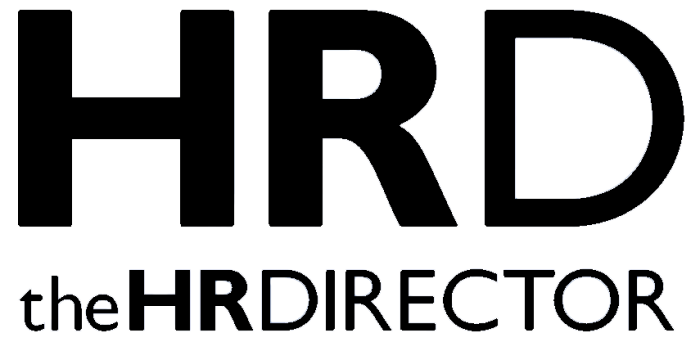In today’s hyper-competitive talent market, organisations must reconsider how they approach talent acquisition and retention. The current model of keeping communications and employer branding under the marketing function is no longer sustainable, especially when the stakes are higher than ever. In the war for top talent, HR must take the reins.
Why? Because employer branding is not the same as traditional marketing—it is a unique strategic function that also drives business performance, growth, and ultimately revenue. Marketing promotes products and services, but communications and employer branding influences the quality, engagement, and retention of the talent that fuels your company’s success. Boards, CEOs, and executive teams often overlook or don’t understand the critical difference. If your organisation isn’t integrating communications and employer branding into HR, you’re already behind the industry leaders. Is it time to rethink your approach to stay competitive?
The reality is that getting this right has a profound impact on your financial bottom line. When HR owns communications and employer branding, they critically influence talent acquisition, reduce turnover, and help accelerate growth—all of which lead to improved business outcomes, reputation, and long-term revenue. HR’s role in employer branding is not just about filling positions; it’s about aligning your culture with the best talent, driving innovation, and propelling your organisation forward.
Internal Brand Alignment: The Foundation for Real Business Value
Before you can attract top talent, you must first align your internal culture with the external message you are sending to the world. Engaged employees are your most powerful brand ambassadors—they are the ones who will attract, sell, and retain new talent. If your internal culture doesn’t match the external narrative, you risk employee disengagement, lower morale, and reduced productivity, all of which affect your bottom line.
This is where HR plays a pivotal role. Transparent leadership, consistent communication, and recognising employee contributions all reinforce a culture that drives engagement and satisfaction. When employees feel connected to your company’s purpose and values, they stay longer, are more productive, and perform at higher levels, ultimately driving better financial results.
When employees become passionate advocates for your brand, they help you attract other top talent. Their authentic testimonials and positive word-of-mouth can be powerful tools in attracting quality candidates, thus lowering your recruitment costs and time-to-hire.
Turning Employees into Brand Ambassadors: A Competitive Edge
The most successful organisations turn their employees into brand ambassadors. When employees believe your organisation is a great place to work, they will champion your brand. The power of word-of-mouth, especially in the age of social media, is unparalleled. Employees who feel aligned with your organisation’s culture, mission, and values will promote the brand to their networks, effectively driving a continuous stream of high-quality candidates.
By building a strong, engaged workforce, HR doesn’t just boost retention—it also attracts top talent through organic, employee-driven advocacy. This reduces recruitment costs, accelerates hiring, and ultimately contributes to the scalability and agility of the business.
HR’s role in creating a thriving internal culture is critical—it ensures that the brand experience you promise externally aligns with the experience employees have on the inside. Without this alignment, organisations face higher turnover, diminished performance, and reduced employee satisfaction—all of which directly affect the bottom line.
Attracting New Talent: Building Relationships with Passive Candidates
Attracting the right talent is no longer about simply posting a job and hoping for the best. It’s about building relationships with passive talent long before you have a role to fill. Studies show that it takes more than 10 touchpoints over several months—or even years—before a candidate decides to hit apply. These touchpoints can include engaging with your content on LinkedIn, reading employee stories, interacting with your social media posts, and receiving personalised communication. Touchpoints can also involve seeing their peers join your company, hearing positive feedback from their network, or noticing your company’s reputation for innovation, flexibility, or culture.
Building these touchpoints and investing in passive talent means that when potential candidates have a bad day at work, didn’t get the pay rise they were expecting, were working all weekend, or are ready for a career change, your company is top of mind. Rather than focusing only on attracting cold talent—those who are actively job hunting—organisations that invest in their passive talent are more likely to see a higher-quality pool of candidates when the time comes to apply.
CEO Leadership and Messaging: Aligning Purpose with People
Too often, CEO newsletters, blogs, and company communications focus solely on business performance, revenue goals, and sales targets—leaving out the critical link between company success and how employees contribute. Candidates want to know how their work impacts the organisation’s results and why it matters. They’re looking for purpose—what’s in it for them, how their role makes a difference, and why they should stay engaged.
CEOs need a strategic EVP (Employee Value Proposition) plan that actively supports the engagement of talent. Their voice is critical in converting passive candidates and ensuring recognition as an employer of choice. Unfortunately, many CEOs shy away from opportunities that aren’t directly related to products, services, or customers. Yet organisations excelling in employer branding leverage their CEOs to be active advocates. CEOs can become powerful ambassadors for the employer brand through podcasts, videos, employee testimonials, and quotes, all seamlessly incorporating the employer brand message into their communications. These efforts reinforce the company’s culture, values, and purpose, making the company more relatable, authentic, and attractive to potential talent.
By positioning the CEO as a leader who champions the company’s culture and values—not just its products or services—organisations elevate their employer brand and demonstrate a commitment to building a great place to work.
Bringing It Together: Alignment is Key for Long-Term Success
Engaging existing employees and attracting new talent go hand in hand. The key to an effective employer brand strategy is alignment—ensuring that what you promise externally is what employees experience internally. This alignment is crucial for not only retaining top talent but also ensuring that new hires will stay, grow, and perform well. When HR ensures that internal culture and external messaging match, your employer brand becomes stronger and more credible, leading to better talent acquisition outcomes.
Ultimately, HR holds the key to creating this alignment. By leading the strategy for both internal and external communications, HR ensures that talent acquisition and employee engagement are integrated seamlessly. This leads to stronger retention, better hiring decisions, and a more sustainable talent strategy that drives long-term business success and financial growth.
Conclusion:
In 2025, Boards, HR executives, and leaders should be rethinking their approach to talent. Boards and HR must drive the strategic talent conversation, encouraging business leaders to think beyond marketing as they know it, daring to do things differently to gain a competitive edge. Only by doing so can organisations truly leverage their employer brand as a strategic asset that fuels growth, reduces turnover, and ultimately delivers the strategic mandates and bottom-line performance.







